Info
Subfamily: Chloridoideae
Genus etymology: Eragrostis = "love grass" [Greek] unclear origin, other etymologies such as "early grass" or "very grass" have also been speculated
Species etymology: barrelieri = honorific for Jacques Barrelier (1606–1675)
Photosynthetic type: C4 (warm season)
Nativity: naturalized - accidental
First recorded in Hawaiʻi: 2004
Map


Inflorescence
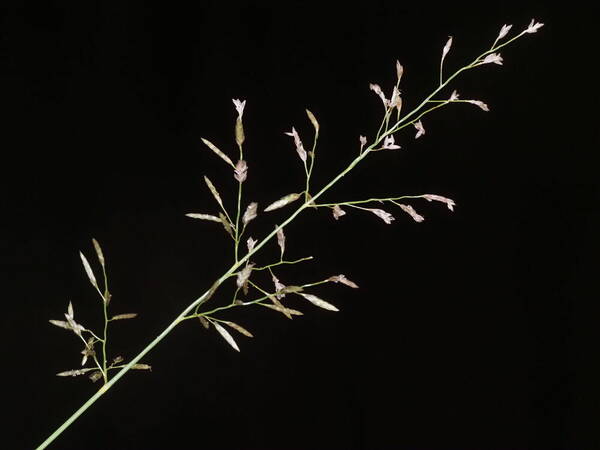





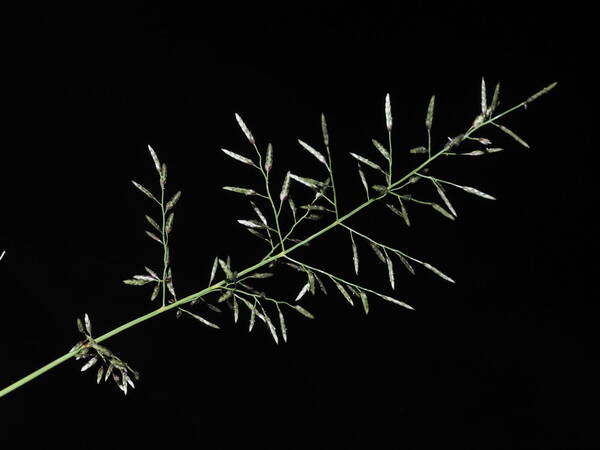


Plant




Habit

Spikelets







Landscape
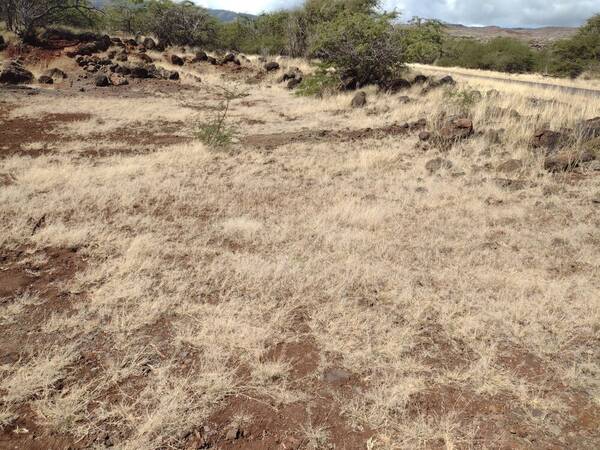
Node
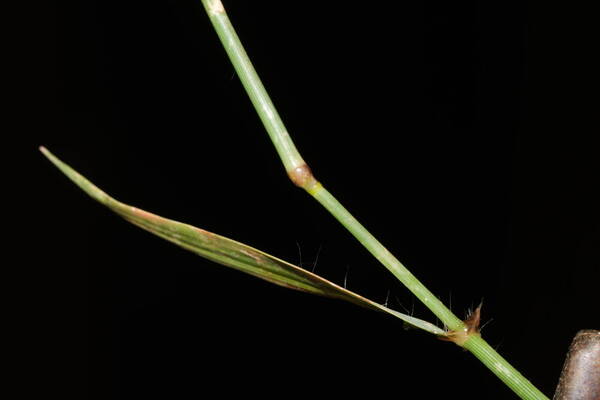
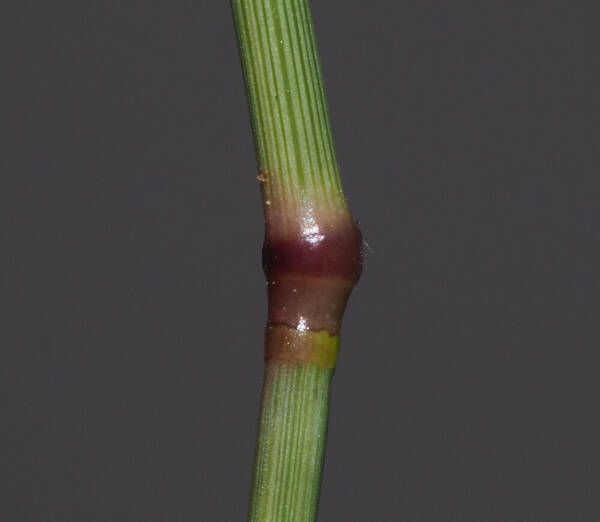
Glands

Description
Annual up to 60 cm high; leaves flat or inrolled, always without crateriform glands on the margins. Panicle lanceolate to elliptic, 3–15 cm long, the spikelets evenly spaced or gathered into fascicles, the branchlets and pedicels often bearing crateriform glands. Spikelets linear, 6–15 mm long, 8- to 25-flowered, shedding their florets from below upwards, the paleas persistent on the tough rhachilla; glumes unequal, lanceolate, acute, without crateriform glands on the nerve, the lower 1–1.5 mm long, the upper 1.3–2.1 mm long; lemmas oblong-lanceolate in profile, papery, 1.7–2.3 mm long, scaberulous above, obtuse; palea-keels scabrid; anthers 3, c. 0.2 mm long. Grain elliptic-oblong, 0.6–1 mm long.
(Description source: Cope, T.A, (1995) Flora Somalia, Vol 4. Royal Botanical Gardens, Kew, London. 312 pp. )
Loosely caespitose annual; culms up to 40(60) cm tall, erect or ascending, branched or unbranched, glabrous at the nodes, with or without glandular pits below the nodes, these often coalescent into a ring; leaf sheaths glabrous, eglandular; ligule a line of hairs; leaf laminas 3–13 cm × 2.5–3.5 mm, linear, flat or involute, glabrous, eglandular.Panicle 7–16 cm long, oblong to ovate-oblong, open, stiffly branched, the spikelets evenly distributed on pedicels 1–3 mm long, these with one or two crateriform glands, the primary branches not in whorls, terminating in a fertile spikelet, glabrous in the axils.Spikelets 5–7(15) × 1.5–1.8 mm, narrowly oblong to linear, laterally compressed, 9–12(25)-flowered, the lemmas disarticulating from below upwards, the rhachilla persistent; glumes unequal, keeled, lanceolate in profile, scaberulous on the keel, eglandular, acute at the apex, the inferior 0.8–1.5 mm long, reaching to between 1/2 and 3/4 the way along the adjacent lemma, the superior 1.3–2.1 mm long, reaching to about the middle of the adjacent lemma; lemmas 1.7–2.3 mm long, keeled, oblong-lanceolate in profile, chartaceous with distinct lateral nerves, diverging from the rhachilla at less than 45°, those in opposite rows scarcely imbricate, the rhachilla ± visible between them, green to leaden-grey or reddish, scaberulous on the keel, eglandular, obtuse at the apex; palea persistent, glabrous on the flanks, the keels slender, wingless, scaberulous; anthers 3, 0.2–0.3 mm long.Caryopsis 0.6–1 mm long, elliptic-oblong, very rarely shorter and broader.
(Description source: Pope, G.V. (ed). 1999. Flora Zambesiaca. Volume 10. Part 2. Kew, London. 261 pp. )
Plants annual; tufted, without innovations. Culms (5–)10–60 cm, erect or decumbent, much-branched near the base, with a ring of glandular tissue below the nodes, rings often shiny or yellowish. Sheaths hairy at the apices, hairs to 4 mm; ligules 0.2–0.5 mm, ciliate; blades 1.5–10 cm long, 1–3(–5) mm wide, flat, abaxial surfaces glabrous, adaxial surfaces glabrous, sometimes scabridulous, occasionally with white hairs to 3 mm, margins without crateriform glands. Panicles 4–20 cm long, 2.2–8(–10) cm wide, ovate, open to contracted, rachises with shiny or yellowish glandular spots or rings below the nodes; primary branches 0.5–6 cm, diverging 20–100° from the rachises; pulvini glabrous; pedicels 1–4 mm, stout, stiff, divergent, without glandular bands. Spikelets 4–7(–11) mm long, 1.1–2.2 mm wide, narrowly ovate, reddish-purple to greenish, occasionally grayish, with 7–12(–20) florets; disarticulation acropetal, paleas persistent. Glumes broadly ovate, membranous, 1-veined; lower glumes 0.9–1.4 mm; upper glumes 1.2–1.6 mm; lemmas 1.4–1.8 mm, broadly ovate, membranous, apices acute to obtuse; paleas 1.3–1.7 mm, hyaline, keels scabrous, scabridities to 0.1 mm, apices obtuse to acute; anthers 3, 0.1–0.2 mm, reddish-brown. Caryopses 0.4–0.7 mm, ellipsoid, not grooved, smooth to faintly striate, light brown. 2n = 40.
(Description source: Barkworth, M.E., Capels, K.M., Long, S. & Piep, M.B. (eds.) 2003. Flora of North America, north of Mexico. Volume 25. Magnoliophyta: Commelinidae (in part): Poaceae, Part 2. Oxford University Press, New York. 783 pp. http://floranorthamerica.org/Eragrostis_barrelieri )